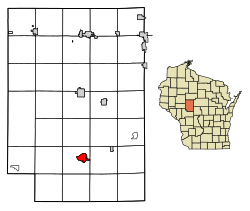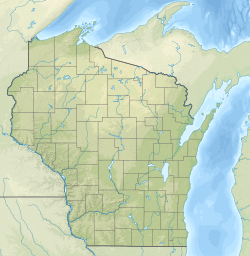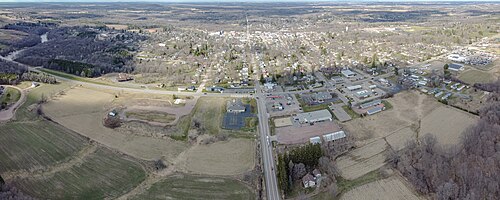2010 census
As of the census [3] of 2010, there were 2,463 people, 1,095 households, and 586 families living in the city. The population density was 889.2 inhabitants per square mile (343.3/km2). There were 1,230 housing units at an average density of 444.0 per square mile (171.4/km2). The racial makeup of the city was 96.2% White, 0.4% African American, 0.7% Native American, 1.1% Asian, 0.9% from other races, and 0.7% from two or more races. Hispanic or Latino of any race were 2.3% of the population.
There were 1,095 households, of which 24.7% had children under the age of 18 living with them, 39.1% were married couples living together, 10.5% had a female householder with no husband present, 3.9% had a male householder with no wife present, and 46.5% were non-families. 42.3% of all households were made up of individuals, and 22.8% had someone living alone who was 65 years of age or older. The average household size was 2.13 and the average family size was 2.92.
The median age in the city was 43.6 years. 21.8% of residents were under the age of 18; 8.5% were between the ages of 18 and 24; 21.3% were from 25 to 44; 24.7% were from 45 to 64; and 23.7% were 65 years of age or older. The gender makeup of the city was 46.6% male and 53.4% female.
2000 census
As of the census [4] of 2000, there were 2,731 people, 1,130 households, and 653 families living in the city. The population density was 975.3 people per square mile (376.6/km2). There were 1,200 housing units at an average density of 428.5 per square mile (165.5/km2). The racial makeup of the city was 96.78% White, 0.15% African American, 1.10% Native American, 1.24% Asian, 0.04% Pacific Islander, 0.26% from other races, and 0.44% from two or more races. Hispanic or Latino of any race were 0.95% of the population.
There were 1,130 households, out of which 27.1% had children under the age of 18 living with them, 44.5% were married couples living together, 10.1% had a female householder with no husband present, and 42.2% were non-families. 38.1% of all households were made up of individuals, and 21.3% had someone living alone who was 65 years of age or older. The average household size was 2.24 and the average family size was 2.99.
In the city, the population was spread out, with 25.3% under the age of 18, 7.0% from 18 to 24, 24.2% from 25 to 44, 18.7% from 45 to 64, and 24.8% who were 65 years of age or older. The median age was 40 years. For every 100 females, there were 86.2 males. For every 100 females age 18 and over, there were 79.3 males.
The median income for a household in the city was $29,969, and the median income for a family was $41,076. Males had a median income of $30,523 versus $20,379 for females. The per capita income for the city was $16,298. About 6.3% of families and 10.3% of the population were below the poverty line, including 6.8% of those under age 18 and 8.9% of those age 65 or over.
















